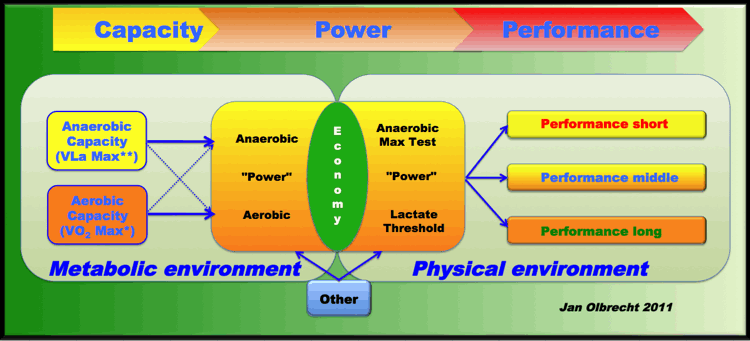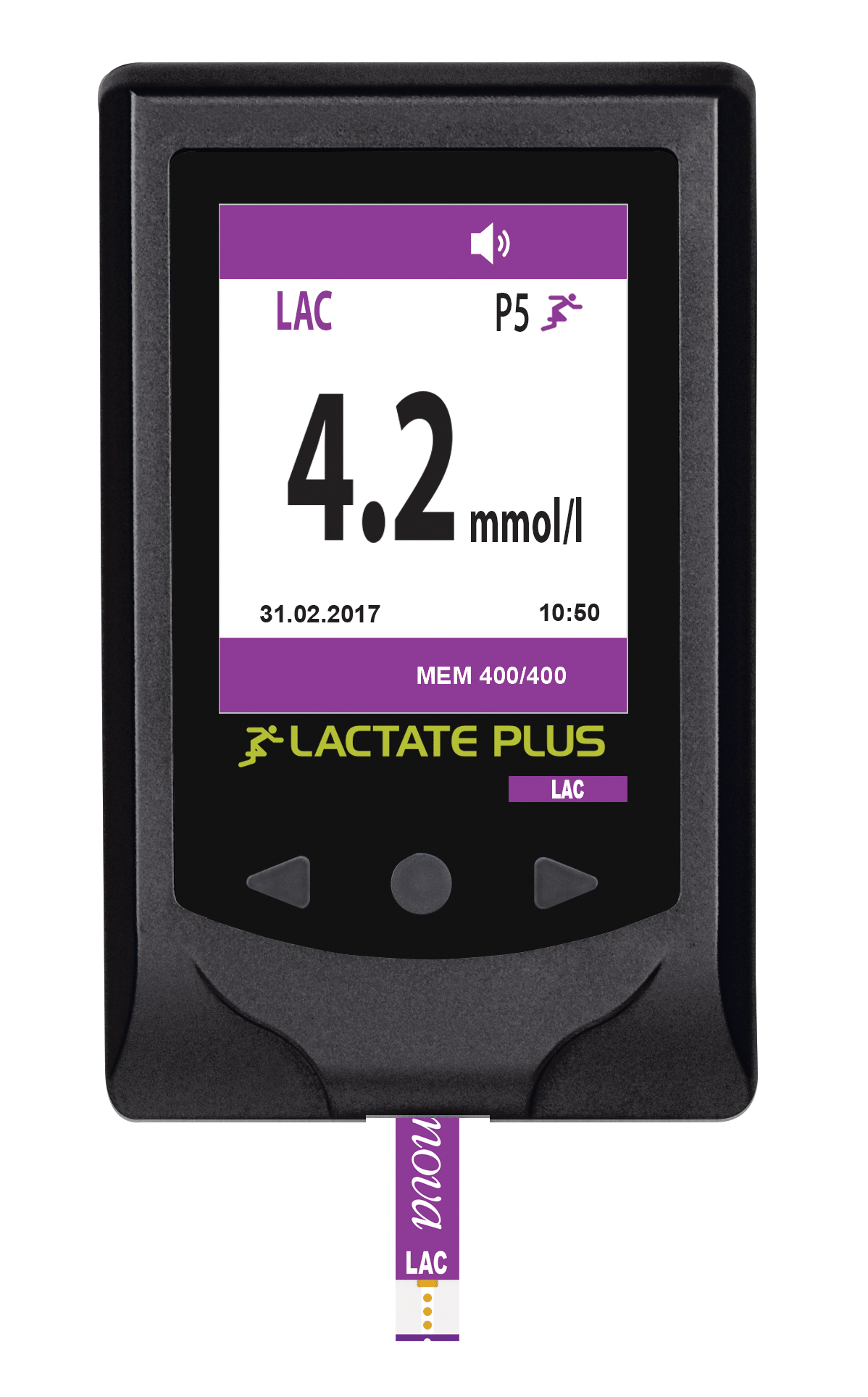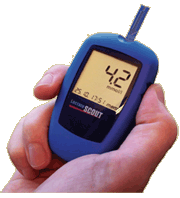Secrets of Lactate Course
Available online - Click for details
Lactate Threshold Discussion - Part 5
(If you entered this page first it is probably best to go to Part 1. The information is meant to be read in order)
General Model of Performance
For shorter events such as rowing, middle-distance running, swimming and other sports with events under 20 minutes but especially those under 8 minutes, energy from the anaerobic system is key to optimal performance. In short events, this is because the anaerobic system provides much more of the energy in these events.
For long endurance events, anaerobic capacity affects performance in two ways besides producing a small amount of energy
- First, anaerobic capacity helps determine aerobic power and thus the lactate threshold, because it interacts with aerobic capacity. Briefly, the anaerobic system limits the body's use of the aerobic system by putting out more lactate and hydrogen ions than the aerobic system can absorb, inhibiting muscle contraction. We refer to this as the gate-keeping effect, which is discussed in detail in this course and elsewhere in the triathlon site. If the anaerobic capacity is too high the athlete will be slowed down by the excess acidosis that accompanies lactate production. So for endurance events it is necessary to train the anaerobic capacity down. The lower it is the more of the aerobic system can be utilized before acidosis occurs. But, it can’t be TOO low because you need some anaerobic capacity for speed....
- Second, anaerobic capacity also affects performance by determining the total amount of carbohydrates that are available for the aerobic system during competition. Carbohydrates metabolize faster than fats and unless the anaerobic system is generating enough carbohydrate fuel for the aerobic system, the aerobic system will have to use a higher percentage of fats which metabolize slower and force the athlete to slow down. Thus, if the anaerobic capacity is too low, less carbohydrate will be available for aerobic metabolism.
In our first point it indicated that a lower anaerobic capacity would be desirable in order to raise aerobic power and the threshold and that is true but if it is too low it will cause the athlete to rely too much on fats and this will slow down the athlete. Supplementing the glucose/glycogen that is used during a race is why an athlete will consume glucose products as the race progresses so that he/she can utilize more of a faster metabolizing carbohydrate fuel instead of fats.
Understanding this model is the key to proper physiological training not only for an endurance athlete but for any athlete. Hockey players, swimmers, speed skaters, soccer players, track cyclists, kayakers, etc have to know the levels of these factors because performance in short events as well as team sports depend on their optimization. But for endurance athletes such as road cyclists, marathoners, triathletes, cross-country skiers and distance swimmers, optimizing their VO2 max, anaerobic capacity and lactate threshold is of prime importance and these athletes must emphasize each in their training.
For those events that are shorter, a more general model is appropriate. The model below includes a new variable called anaerobic power that affects performance in short events. The model is very similar except anaerobic power is added and the Max Test is a clear part of the assessment.

Anaerobic power becomes more important the shorter the event. For events less than a minute such as a 400 m foot race, some track cycling events and 100 m swimming events, it is of utmost importance. It becomes less important as the event gets longer so that 3000 m running, 2000 m rowing races, and swimming events over 200 m will be affected to a lesser extent. For distance events it is of little consequence, which is why it is not part of the model for endurance performance.
Basically, anaerobic power is the level an athlete can utilize the anaerobic system to generate energy, and for how long. The anaerobic system generates energy at a much higher rate than the aerobic system and thus provides the speed to win shorter events. The problem is that the anaerobic system produces many metabolites, such as hydrogen ions, that can inhibit continued movement. So the athlete must be trained to utilize and withstand the effects of these negative metabolites. A high VO2 max is one of the best ways to do this. That is why athletes in short events must have high aerobic capacity as well, and much of their training is aerobic or endurance training. Swimmers who excel in 100 m events spend most of their early season training to raise aerobic capacity or endurance ability and much less on developing the anaerobic system that provides the speed to win the race. This changes as the swimmer gets nearer to important events. The high aerobic capacity allows the sprinter to use the speed system (anaerobic system) longer and at higher levels, which increases anaerobic power. And that is what wins short races.
Here are the comments by two coaches describing this affect:
- The aerobic system acts like a vacuum cleaner, sucking up all the bad stuff that is produced by the anaerobic system. The stronger the vacuum cleaner the more anaerobic work can be done.
- The stronger the aerobic system is, the more anaerobic energy can be sustained over the course of a race. In a short race often decided by less than a second, this is the key between winning and not even being in the finals.
This has been a fairly long and somewhat elaborate discussion of the importance of the lactate threshold. The reader may not have expected this technical a discussion but it is important to embed the lactate threshold within those other factors that affect performance to show why it is so important.


